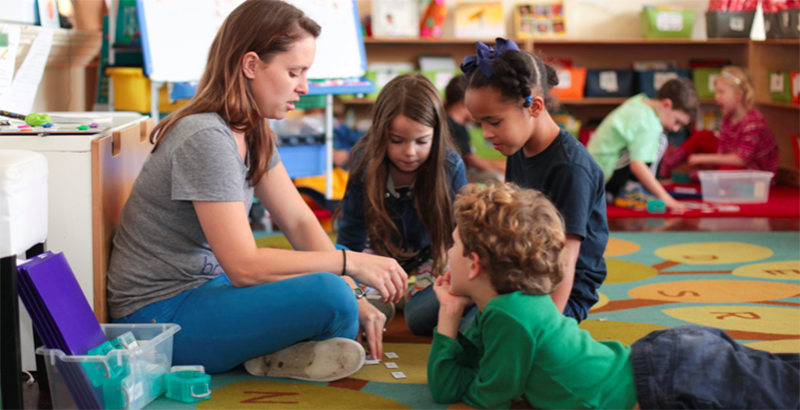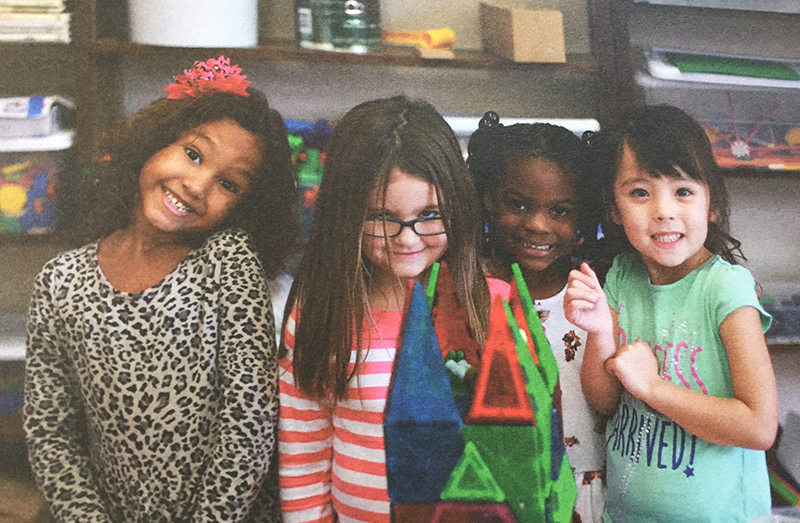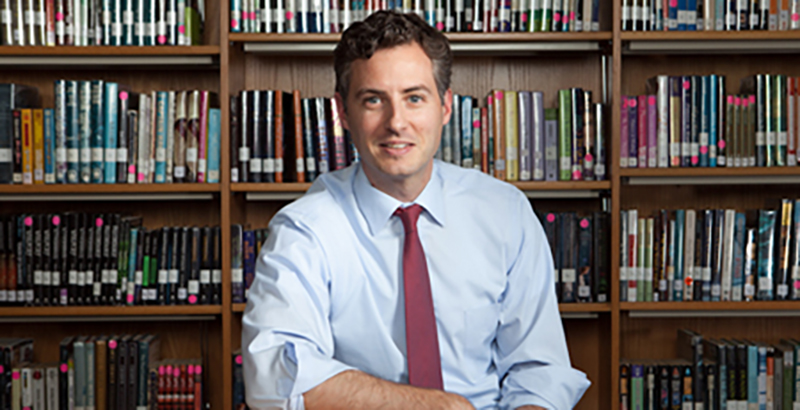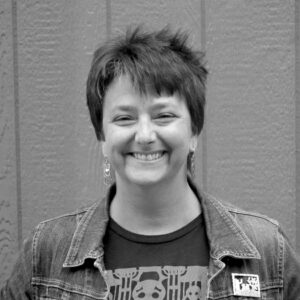NOLA Schools Went From F to C Post-Katrina. Here’s What the Hard Work of Going From C to A Looks Like

Correction appended Oct. 2
Reams of statistics outline the meteoric improvement in New Orleans public schools in the 12 years since Hurricane Katrina. So far as anyone knows, David Osborne asserts in his new book, Reinventing America’s Schools, it’s the most dramatic school improvement effort in U.S. history.
In 2005, the year the storm forced the temporary shuttering of all of the city’s public schools, 35 percent of students passed state math and reading exams. By 2014, the percentage had risen to 62.
Before, 62 percent of New Orleans students attended schools on the state’s failing list. Even though state standards rose in subsequent years, that number fell to 6 percent by 2016. The city’s public schools, measured collectively, rose from the equivalent of Es and Fs to a C on state report cards.
Because storm damage necessitated $1.8 billion in new infrastructure, some of the poorest children in the country now spend their days not in buildings crumbling from decades of decay and infestation, but in sun-drenched, pristine classrooms.
Policymakers and education scholars nationwide have tracked the unprecedented effort in the hope of finding a road map to the transformation of other crippled school systems. Lessons gleaned are on display in classrooms thousands of miles away.
And yet, astonishing as the turnaround New Orleans’s educators and policymakers have pulled off is, it’s not nearly good enough. A fourth of the city’s children — including a majority of white kids — attend private schools, the highest rate of any metro area in the country. Schools are as segregated as before, according to researchers at Tulane University.
And a C is hardly a grade to crow about. Only a fourth of New Orleans students scored at the “mastery” level on Louisiana’s 2017 state assessments. And just 14 schools beat the state average.
Only seven schools earned an A on state report cards, and three of the seven are “selective admissions” schools that currently don’t have to take struggling students. Six earned Fs and 15 Ds.
Growth, for years the fastest in the country, has flattened. Pending this year’s report card, the system has been stuck at C since the 2013–14 school year.
Ben Kleban is the founder of the New Orleans College Prep network of schools and a member of the Orleans Parish School Board, which is in the process of taking control of the city’s schools back from the state Recovery School District, which has run all but a handful since Katrina.
The elected school board oversees a district that 10 years ago was mired in corruption and ineptitude. Although many fear the board will not be as tough on underperforming schools as state overseers, Kleban has been an early and vocal proponent of reunification.
To move the needle further, he and other backers of the experiment say, New Orleans needs to see two huge changes. First and foremost, if equity is to be achieved, the public schools must attract all children, wealthy and poor, which means racial integration — an elusive goal anywhere, much less in the South.
Equally hard: To graduate students with the critical thinking skills, creativity, drive for innovation, and tenacity needed to ensure the city is not just rebuilt but revitalized, school needs to look radically different from the “command and control” model that lifted the system from failing to average.
“From a big-picture perspective, we have to recognize that student outcomes have plateaued and even declined,” says Kleban. “As a school board with authority over all these schools, we have to fundamentally revisit school improvement. We can’t just keep doing what we’ve been doing.”
The bottom line: Getting from C to A, the architects of the effort say, will be harder. Much harder.
The next decade is likely to be the real test. “What scares me the most is we won’t get it right,” says Kleban. “The stakes are so high.”
‘Ghosts in the classroom’
It’s Day 11 of the new school year at Bricolage Academy of New Orleans. In one of those sunny, freshly painted classrooms, fourth-graders are engaged in morning meeting, which on this day is a variation on show-and-tell.
One boy watches as a stuffed toy his grandmother gave him makes its way around the circle, no doubt anxious his classmates might handle his treasure too roughly.
His seatmate pulls out a CD of Prince’s 1999 and, in the impossibly earnest tone only a child can muster, speaks directly to it: “I just really like listening to you.”
A third boy produces a bottle of Tabasco and describes his family’s summer trip to the bottling plant. Alarmed, his teacher jumps as the bottle starts around the room. “Let’s not open the hot sauce right now,” she interjects. “Let’s not.”
In its fourth year, Bricolage is something of a laboratory. The program’s founders believe that educational equity doesn’t just benefit when children of different backgrounds are educated together — it requires it. Accordingly, the school is intentionally diverse, with enrollment policies to ensure it remains so.
Educators here are working on strategies that could radically alter the city’s school landscape again. Teachers work to customize instruction, with an emphasis on student agency and creativity. Its test scores make it the highest-performing open-enrollment school in the city. For every open seat, there are five applicants..
And the exchange with the hot sauce? It may seem like the most trivial thing. But because of those moments when a class is in danger of losing its collective focus — and by extension the teacher’s ability to manage behavior — transitions are something of an obsession in high-performing schools.
Managing moments where things can teeter off course is just one element in creating a school culture where classrooms are orderly and calm — the characteristic parents frequently cite, above test scores, as their first priority in choosing a school.
Bricolage is attempting to forge such a culture not by controlling the sundry transitions that make up a school day but by teaching students to manage their own behavior. It’s an extension of the philosophy behind the personalized approach: Give students both autonomy and accountability, and they will achieve more than they would with strict adult guidance.
“I’ve seen too many situations where it’s control, control, control, and supposedly gradual release, but that never happens,” says founder and CEO Josh Densen. “There are hidden low expectations when you control kids.”
“We from the beginning tried to take a very organic approach to kid culture,” adds Elementary School Principal Michele Murphey. “We try to build social-emotional skills in a way that trusts their ability to manage themselves and their tools and emotions.”
This is a high-wire act in any school, but all the more so in an integrated setting where “ghosts in the classroom,” as they’re known — unconscious beliefs stemming from teachers’ and parents’ own experience of parenting and school — factor into the million interactions that make up the day. Even if a teacher works to address his or her own implicit bias during, say, a morning meeting, how is the school day discussed at the dinner table?
As the school grew from an inaugural class of 76 kindergartners in the fall of 2013 to 445 in grades K-4 this fall, consistency from one classroom to another became harder and harder, says Murphey. Bricolage faculty met monthly last year to consider different strategies for ensuring that expectations about adult language and student behavior were the same throughout the school.
They needed a system all teachers could apply regardless of their own “ghosts,” and in place of demerits and rewards they wanted students to grapple with so-called natural consequences, the problematic issues raised by bad choices.
They settled on Responsive Classroom, an approach that associates social and emotional learning with academic achievement. Teachers foster a sense of belonging, in which children are comfortable taking risks. Adults use consistent language that reinforces good choices and recognizes students’ strengths.
Responsive Classroom isn’t new, and a solid body of research backs its effectiveness at raising achievement. But because teachers are modeling the self-regulation skills they expect students to acquire, the approach is most effective when teachers have bought all the way in. When a school’s entire staff is on board, results are even stronger.
One of the key tenets of the approach is to give students choices as to how they will meet a particular learning goal, which jibes perfectly with Bricolage’s goal of customizing instruction.
There are 45 staffers working with about 445 students, a low ratio that enables teachers to meet each pupil’s unique needs. While every classroom has extra teachers during morning meeting, when art and other co-curriculars aren’t being taught, kindergarten has a second teacher all day long. Typically new to Bricolage, the co-teacher not only helps customize lessons but has a full year to learn the school’s approach.
Like all New Orleans schools participating in the unified enrollment system, Bricolage must accept new students when seats open up. Often, those transfer students are behind. A number of teacher “interventionists” work with individual students or small groups to help children acquire missing skills or catch up.
“We have some kids on tight behavior plans,” says Densen. “But that’s an intervention.”
Morning meeting and the other items on the daily schedule are similar in every classroom, from kindergarten through fourth grade, by design, says Densen. “It’s community-making,” he says. “We think that’s connected to longer-term progress on the achievement gap.”
Indeed, as the Tabasco and the CD are being handed around the fourth-grade sharing circle, four kids are doing their own thing. Three are finishing projects or books they chose at the start of the morning to help transition to the school day.
The fourth is busy making a good choice about behavior. Seated next to a classmate bent on distracting him, a boy has gotten up and moved across the circle. Not long ago given to veering off-task himself, the boy has scored a victory in self-regulation.
Bricolage more diverse than NOLA proper
Like many other teachers and education leaders, Densen came to New Orleans to join the effort to rebuild its schools. He began his career as a Teach for America corps member in Oakland and taught in KIPP schools. In 2009, he moved to Louisiana to head the local office of the Achievement Network.
But as he and his wife started looking for a kindergarten for their daughter, he was forced to confront the fact that the school he wanted for his family didn’t exist: “There was no school that was socioeconomically diverse and academically excellent.”
Densen wasn’t the only New Orleans educator coming to the same realization. His neighbor, Matt Candler, moved to the city in 2006 to serve as the first CEO of New Schools for New Orleans, whose mission is to push for school quality.
But the alternatives were equally unpalatable to any white parent who didn’t want to enroll their child in a white enclave — a private school or one of a handful of traditionally run Orleans Parish School Board schools that had steep entrance requirements.
With the school system stable but overwhelmingly poor and black, he adds, lots of white education reformers began acknowledging the same thought: “I’m promising these families I’ve got this school that will do right by your kids, but then when I had my own kids …”
“I came to New Orleans to do school to New Orleans,” Candler says bluntly. “We have to start ridding ourselves of the mindset that solutions come from people who are outside of New Orleans. Part of going from C to A has to be more done by and with locals.”
In 2010, he started the education idea incubator 4.0 Schools with the aim of giving people support for testing even crazy-sounding ideas and fleshing out the ones that prove to have merit. Densen was one of 4.0’s first fellows, taking fun tools teachers call manipulatives to parks and festivals and engaging the parents who came trailing after curious children.
“We put out the Thinker Linkers and kids would come to us,” he recalls. “Out of those conversations, it became clear, people want a school that’s diverse and different from where they went to school.”
Two years later, Bricolage was born. The word bricolage has several meanings. Among them: the creation that results from a tinkerer, or “bricoleur,” combining an assortment of different elements. An apt name for a school trying to conjure possibility.
Like at other charters, enrollment is via lottery, but under a set of rules created to try to maintain racial and socioeconomic balance. Siblings of current students, children of employees, economically disadvantaged children, and residents of the school’s assigned zone under the enrollment system have preference.

In the 2015–16 school year, 54 percent of students were white, significantly higher than the 31 percent of the New Orleans population that is white. At 39 percent, black enrollment trailed the city’s population by about 28 points. Nearly half were impoverished, and 10 percent qualified for special education — a number that’s growing. Although the number fluctuates system-wide, some 11 percent of students in New Orleans public schools qualified for special education services in 2015–16.
To circle back to the intentional construction of a culture that sees children as capable agents of their own learning, Bricolage is succeeding. And already it’s clear that putting children from diverse backgrounds into the same building isn’t enough.
While too new to appear on Louisiana state report cards, the school appears poised to earn an A or a B this year. But it faces an internal achievement gap. Every demographic group of students in the school is far outpacing state averages on end-of-year exams, says Densen.
Overall, 61 percent of students in third and fourth grades, the earliest years for which the state requires an assessment, scored at “mastery” or above in reading on Louisiana’s LEAP tests. Sixty-nine percent of students scored “mastery” or above on math tests. Broken out, the school’s economically disadvantaged students and black children scored higher than their peers in 85 percent of New Orleans schools.
But there’s still a gap. While 75 percent of white children scored mastery or above on both tests (significantly higher than the 45 percent rate statewide), 30 percent of black students did, compared with a state rate of 19 percent. Thirty-eight percent of Bricolage’s economically disadvantaged students were proficient, compared with 25 percent statewide, while 69 percent of its students who are better off scored at mastery or above, compared with 52 percent of their socioeconomic peers statewide.
Teachers and administrators have a number of detailed classroom interventions planned to work toward a “near-term” goal of 75 percent proficiency throughout the school. Another step is committing to making sure 50 percent of staff, teachers, and board members are people of color. Another is to engage parents on issues of bias and culture.
In the meantime, they say, they have a lot more work to do to exorcise the ghosts from their classrooms. It’s clear that consistent culture notwithstanding, what happens in the classroom is perceived differently in different homes. To that end, the school recently hosted a two-day Racial Equity Institute.
“One of the next big steps is to develop empathy, with respect to bullying,” says Murphey. “We need to develop parent support around that — because it’s a limited goal if you can’t get parent buy-in.”
As schools succeed, so does New Orleans
Next year, when its inaugural cohort of kindergartners graduate from fourth grade, Bricolage will open a middle school, which will start with fifth grade. Both programs will be housed down the street in the former John McDonogh High School, which is undergoing a $40 million renovation.
It’s one of the city’s most prominent, storied school sites. Most recently, the building housed the Future Is Now public charter school, which turned in its charter in 2014, a year after posting the lowest performance in the state. The decision to give the campus to Bricolage was made after lengthy debate.
It’s a curious home for an intentionally integrated school. A slave owner who died in 1850, the eccentric McDonogh attempted to make restitution for owning Africans by paying for the education of freed blacks and by endowing school systems in New Orleans and Baltimore specifically for poor white and freed black children.
His benevolence was not total, however. McDonogh offered his slaves the chance to buy their freedom but profited from their labor while they saved the money. He also used his considerable fortune to pay for freed slaves to move to Liberia, which he and other “colonizationists” thought preferable to assimilation.
McDonogh’s bequest funded the construction of more than 30 schools, most of them bearing his name and a number. Eight were still in operation at the time of the storm. Deciding whether to change the names of the schools that occupy the buildings is a fraught exercise: The legacy is shameful, but the schools beloved.
New Orleans’s racial history is also rich with social change driven by its black population, says Towana Pierre-Floyd, founder and school leader of KIPP Renaissance Early College Academy. Reconstruction after the Civil War, she notes, was a precursor to the civil rights movement.
“You had all the elements of fighting against streetcar segregation. You had element of fighting for voting rights,” she says. “You had one of the largest populations of black politicians come to this city and serve this city and the state after the Civil War in a way that really shifted a lot of policies. The city was the place that had the largest population of free people of color anywhere in this country.”
The success of the city’s schools is intimately tied to the overall health of the community, and because New Orleans struggles with crime, poverty, and homelessness, students born years after Katrina are showing up to school with the effects of trauma.
“Thirty percent of our students are living in poverty,” says longtime New Orleans educator Jamar McKneely, CEO of InspireNOLA, one of the city’s most successful school networks. “The median income for African-American [families] is $25,000. We’re still having a lot of violence in our communities when it comes to gun violence. But now, hopefully, what we’re doing, we’re transforming, giving those students true outcomes where they can be great citizens in our community.”
Getting from essentially a F system to a C system dispelled the notion that poverty is destiny, says Kleban. But the city can’t thrive with two systems, one of haves and one of have-nots.
“We have a high number of schools serving a high number of kids with challenges. Is that the best way to meet the needs of those kids, to isolate them in those schools?” says Kleban. “On a fundamental level, we have to address the segregation in our schools, the segregation of need, the segregation socioeconomically.”
Creating innovative, integrated schools isn’t just about bringing families of different races together, he adds. It’s about creating a school system all New Orleans residents are invested in, are willing to invest tax dollars and community resources in.
“I believe if we could find the way to engage the entire public in our schools it would create a whole other level of investment, and all our kids would benefit,” says Kleban. “It would shift the mindset from ‘public schools are a charity cause’ to ‘public schools are where I see my kid and my grandkid.’ ”

Complacency, adds Louisiana state Superintendent of Education John White, is the strongest threat to continued progress.
“I think one of the big obstacles, I believe, is that again we have this silent majority,” he says. “New Orleans has done amazing things by being real and honest with its educational challenges. We have to keep that level of honesty.”
Which means taking risks, including challenging conventional notions not just of school governance — the experiment New Orleans is famous for — but of the definition of school itself.
“It comes back to this word, creativity,” says White. “ I think there is a willingness here to solve problems, to take problems upon oneself and to solve them … ‘I’m not gonna wait for central office to tell me what to do. I’m not gonna wait for a law to be passed to tell me what to do. I’m gonna do it.’
“And in my view, in a place of such dramatic homelessness, such dramatic transience, such dramatic unemployment, such dramatic violence — for all of its strengths, New Orleans has those issues,” White continues. “And we can sit around and wait for somebody in the central office or in Washington to start some program that might solve it, or we can just do it ourselves.”
Correction: While Bricolage Academy of New Orleans emphasizes customized instruction, it does not provide a personalized learning plan for every student. In addition, this year the school eliminated the second teacher for its first-grade classes.
Get stories like these delivered straight to your inbox. Sign up for The 74 Newsletter

;)
